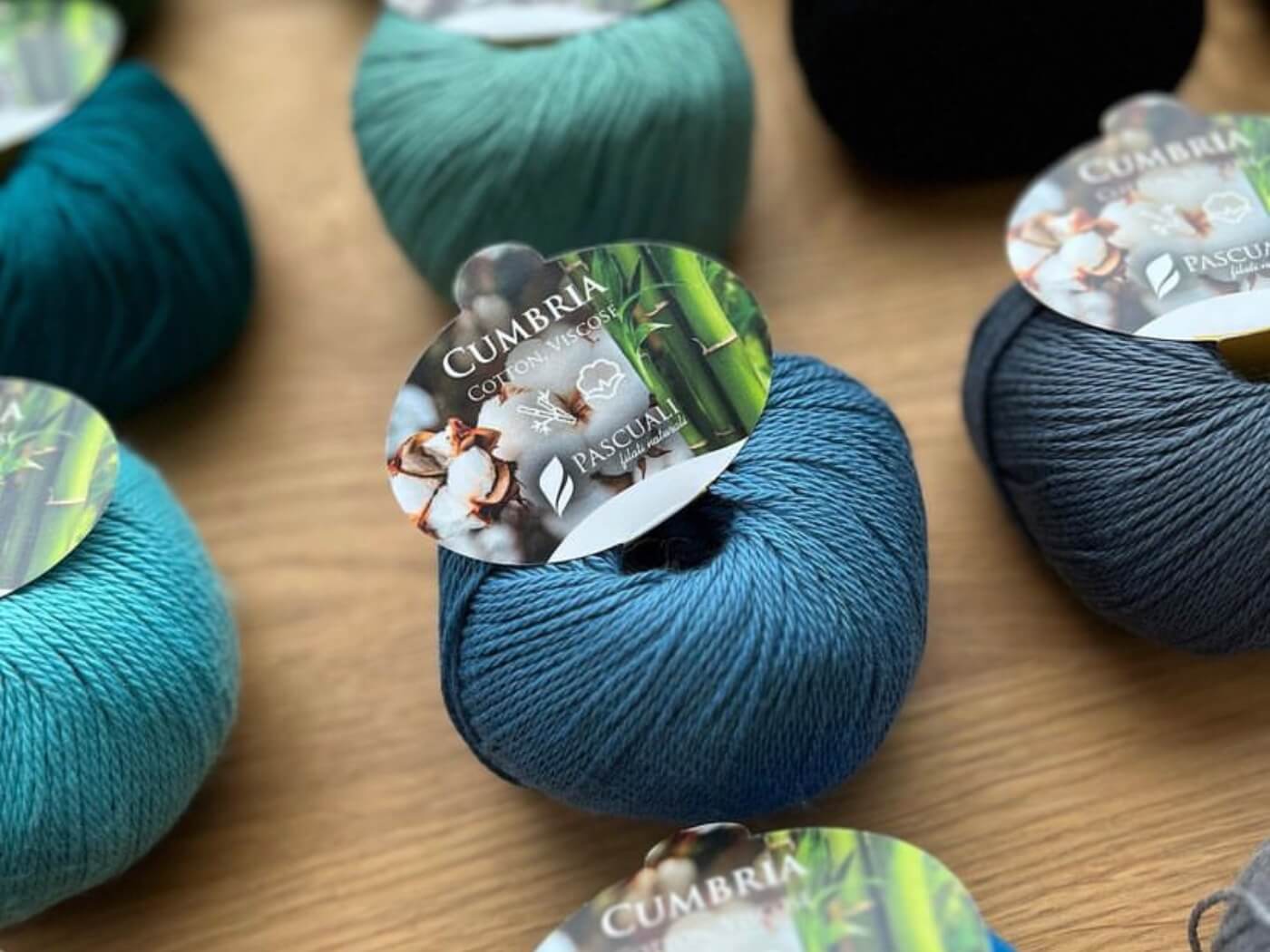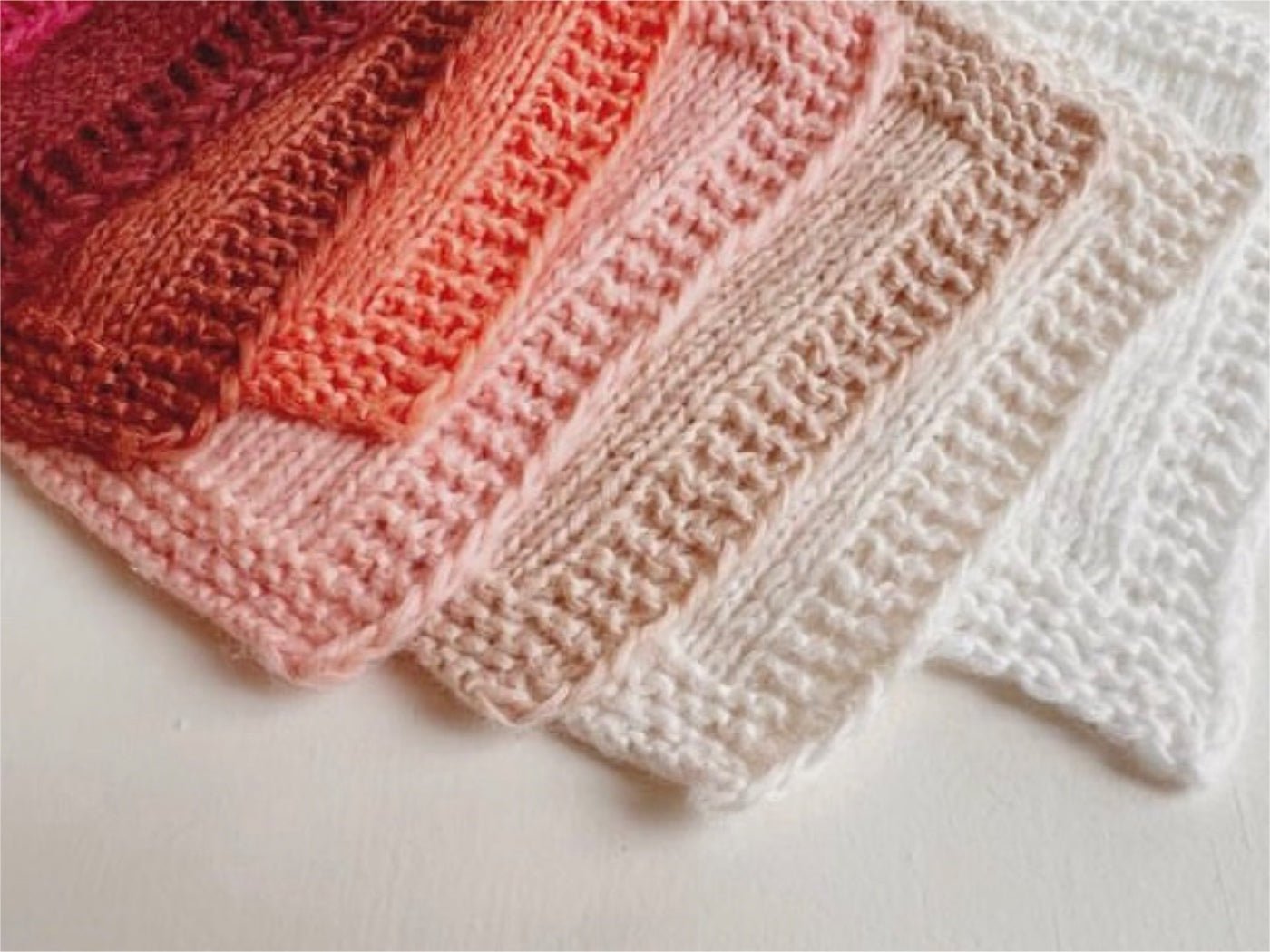By Claudia Ostrop
In our last blog post, we introduced you to some of the most common increase techniques when knitting. Now, we will introduce you to decrease techniques when knitting. We will do our best to explain each technique in detail not only with photos, but also with video tutorials.
Knitting Decreases
Whether for the toe of a sock, the sleeve of a cardigan or tip of a hat, decreases, just like increases, are fundamental to knitting. In most cases, the decreases also lean in one direction - you can take advantage of this fact so that the stitch structure remains nice and uniform. Always make decreases in rows, one or two stitches away from the edge so that the edge remains smooth and even.
Decreasing by Knitting Stitches Together
A simple, standard way to decrease two or three stitches is to knit stitches together.
Knitting 2 Stitches Together: k2tog
Two stitches are simply knitted together through the front loop: the result is a stitch that is slanted to the right. This also works with three stitches - such a double decrease is sometimes necessary if, for example, you are knitting in a rib pattern (pattern).
If the stitch is to slant to the left, the stitches to be decreased are knitted together through the back loop: k2tog tbl. This also applies to double decreases, where 3 stitches are reduced to one.
Purling 2 Stitches Together: p2tog
Here two stitches are purled together through the front loop. On the right side of the knitted fabric, the stitch appears slanted to the right.
If you want to purl the stitches together so that there is a stitch slanted to the left on the right side, you have to knit them together through the back loop: p2tog tbl.
This is a bit fiddly, but worth the effort: With the right needle point, go from left to right into the next two stitches on the back and then purl them together.
Of course, three stitches can also be reduced to one when purling them together.
Decreasing with Slipped Stitches
With some methods, the stitches are not knitted together directly, but are slipped over or passed over other stitches, as with binding off.
Pass a Stitch Over (sl1-k1-psso)
A stitch is slipped as if to knit, the following stitch is knitted and the previously slipped stitch is then pulled over the knitted stitch. The stitch slants to the left.
Slip, Slip, Knit (ssk)
With this technique, the stitch is also slanted to the left: Slip one stitch as if to knit, lift the next stitch as if to purl and then knit both stitches through the front loop. The ssk decrease is the mirror image of knit 2 stitches together (k2tog).
Slip, Slip, Purl (ssp)
And there is also the opposite: the two stitches are slipped one after the other as if to knit (this twists the stitches so they are well positioned), then slip them back onto the left needle and purl them together.
Double Decreases
Sl1-K2tog-psso
Slip 1 stitch knit wise, knit 2 together, lift the slipped stitch over the two stitches that were knit together. You may also have seen this stitch abbreviated as sk2p. The stitch on top points to the left, the previously knitted together point to the right, creating an inverted V. This decrease is very often used as a design element in lace patterns.
s2kp2 or sl2-k1-p2sso - Centred Double Decrease
Two stitches are slipped together as if to knit together, knit the next stitch, and the slipped stitches are then passed over the knitted stitch. This centred double decrease has no direction of inclination and it does not form such a defined V as the technique described above.
Of course, there are various other ways to decrease stitches and our compilation does not claim to be complete. These are the common techniques used in our patterns. We hope you find these short explanations and accompanying video tutorials useful and maybe even make your knitting life a little easier!
A tip: just save this post, then you'll always have it handy!




